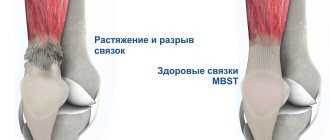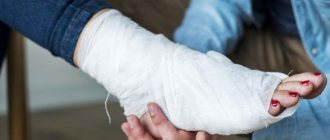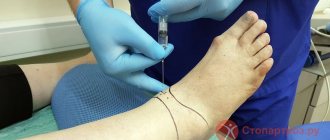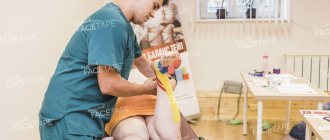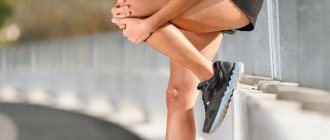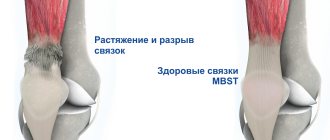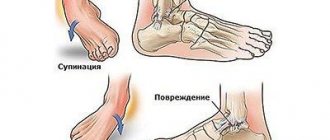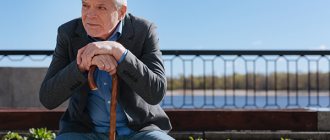About urine therapy
There are many positive reviews about the effectiveness of urine therapy
Urine therapy is a treatment method based on the use of your own urine. In this case, urine is taken both internally and used externally. The effectiveness of treating joints with urine is based on the fact that this liquid gets rid of salt deposits.
Adherents of this alternative medicine claim that treatment with one’s own urine helps relieve pain and inflammation due to the fact that a certain amount of hormones secreted by the adrenal glands is excreted in the urine. These substances have anti-inflammatory and anesthetic effects, helping in the fight against various diseases.
A few rules of urine therapy:
- Only your own urine is used,
- treatment is allowed only in the absence of infectious diseases,
- urine is taken as medicine,
- urine is used for rubbing and compresses.
During treatment, only aged urine should be used. In this case, urine should be in the morning, since it contains a maximum of organic compounds that are excreted by the kidneys during the night's rest.
The method is quite dubious, but many people claim that treatment with their own urine eliminates various pathologies. In the absence of disgust and immunity to the opinions of strangers, everyone can try this method of treatment on their own and draw conclusions about its effectiveness.
Using urine to treat joints
For arthrosis and arthritis, therapy is carried out using compresses with urine
According to adherents of urine therapy, urine lotions for joints will help:
- eliminate pain syndrome,
- reduce swelling,
- improve nutrition of cartilage tissue,
- normalize the production of synovial fluid,
- relieve inflammation
- improve motor activity,
- stop the progression of the disease.
Skeptics and rheumatologists argue that all this can be achieved in more gentle ways, for example, massage or rubbing with snow and salt. The effectiveness of urine therapy for joint pain is due precisely to the mechanical and thermal effects, but not to the healing power of urine.
For those who decide to try this method, the following recipes will be useful.
- Compresses: moisten gauze, folded in several layers, in urine and apply to the sore joint. Wrap the compress on top with cling film and leave overnight. During the process of keeping the compress, you may feel itching and tingling due to the composition of the urine.
- Lotions for joints: moisten gauze in fresh urine and apply to the sore joint. Leave until the compress has cooled, then remove and rinse the joint with water.
- Rubbing with urine: soak a towel in yesterday’s urine and thoroughly rub the joint along the massage lines. The exposure must be intense so that the skin becomes red and hot.
Treatment with urine is proposed to be used in the treatment of diseases of the knee joints. In this case, rubbing and lotions are suitable. The procedure must be carried out daily before bed.
For arthritis, it is recommended to self-massage with urine. The procedure is repeated daily before bedtime. According to people who have tried this method, this effect helps get rid of the feeling of stiffness in the joints after sleep.
A compress with urine for joint disease can be done up to two times a day. It is important to monitor the reaction of your own epidermis. If a rash, irritation, diaper rash or severe itching appears on the skin, treatment should be stopped.
It is important to understand that urine contains many harmful compounds, so treatment should be short-term. On average, the course of therapy takes 2-3 weeks.
Medicines for treating injuries and wounds
Injuries and wounds, unfortunately, do not happen as rarely as we would like. In summer, the most common injuries are burns, bruises and minor injuries such as scratches and abrasions. But it should be remembered that any wound or injury requires serious treatment . Under certain conditions, even minor damage can cause serious consequences.
Burns
We mainly encounter household burns of the 1st (redness of the skin) and 2nd (formation of blisters) degrees.
Most often these are thermal burns - i.e. received as a result of contact with fire, heated objects, liquids, steam. Burns can also occur from exposure to the sun. The first thing to do is cool the burn area with cold water or a hypothermic pack. This will reduce pain. If you need to take painkillers, a good choice would be drugs based on ibuprofen: Next, Ibuprofen Medisorb
in capsule form, or a drug based on naproxen Theraliv 275, which is safe for patients with cardiovascular problems.
MestaMidin-sense Home
is
suitable as an antiseptic - it effectively fights germs without causing pain or irritation;
Chlorhexidine
or
ramistin
may also be used .
2nd degree burns can cause scarring. To prevent the appearance of scars and restore the skin, you need to regularly apply healing products. Usually these are drugs based on dexpanthenol
, because
it increases collagen production. This can be a spray, aerosol or foam, for example Panthenol
,
Librederm Panthenol
AfaPlast
liquid patch . They do not cause pain or discomfort when applied.
Children's Pan tenol BC foam spray
.
If you are more comfortable using drugs in the form of ointments and creams, you can use Romalen cream, Panthenol 6%, Dexpanthenol Vertex
.
For buyers who trust products with herbal composition, it would be advisable to offer Cikaderma
, which promotes healing and relieves the inflammatory process.
The treatment of sunburn is not much different from the treatment of thermal burns, but it is quite possible to prevent their occurrence. In addition to sunscreen, offer the buyer a course of beta arotine
, which will help prepare for sunbathing by improving the condition of the skin and protecting against ultraviolet radiation due to increased antioxidant activity.
It is worth giving preference to such dietary supplements as the Complex of hyaluronic acid, vitamins and collagen
;
Solgar Beta Carotene
;
Nature's Bounty Beta Carotene. Bruises and contusions
Summer is a time for outdoor activities, which are very often accompanied by falls and bruises and, as a result, hematomas (bruises).
Initially, it is recommended to cool the site of the bruise; AfaFrost
is a freezing spray that instantly relieves pain and prevents the formation of a hematoma, as well as a hypothermic package.
Ketoprofen gel 5%
or
Diclogen 5%
is suitable as a local anesthetic , depending on purchasing power.
The release form (gel) allows the drugs to be easily distributed on the skin and quickly absorbed, which ensures a faster onset of the therapeutic effect. For removal, we recommend Arnigel gel
- thanks to its natural composition, it is suitable for the smallest (1+), and a large tube (120 g) will be indispensable in a family where fidgets live.
As a budget option, suggest Troxerutin DS
,
gel with badyagi “Simple recipe”
.
The combined use of external and internal agents will be more effective; for this we recommend using Arnica Montana granules (0+)
. Mountain arnica helps strengthen the walls of blood vessels and capillaries, due to the rupture of which the hematoma appeared.
Minor damage: abrasions, scratches, cuts
Since abrasions and scratches are considered accidental injuries, they are always contaminated with microbes to one degree or another.
Wounds contaminated with soil and caused by rusty nails are especially dangerous because of the possible development of tetanus. The first thing you should do is wash the wound with clean warm water and treat it antiseptic solution
, such as
MestaMidinsense Daily
in a convenient spray bottle - it does not sting and is suitable for pregnant women and children (0+).
Miramistin
or
Furacilin
tablets for preparing a solution
are also suitable hydrogen peroxide 3%; chlorhexidine bigluconate. After treatment, the damaged area is carefully dried by blotting with a sterile gauze pad. Then the wound must be treated with antibacterial agents to prevent the development of purulent-septic complications. It is best to use drugs in powder form, such as Baneocin, which can be used from birth. To speed up healing, use Cikaderma
, which has an antiseptic effect, and its herbal components relieve inflammation and reduce pain;
it is suitable for children from the first year of life. -
based products: Stellanin
,
Solcoseryl or
Emalan collagen hydrogel
.
If necessary, the wound can be sealed with a plaster or BF-6 glue
, which is suitable for shallow cuts.
Afa Plast (liquid patch)
has become a competitor to the regular patch : it creates a protective film and does not peel off like a traditional patch.
For mothers of active children, we recommend that you always carry disinfectants with you, such as Lekker hydrogen peroxide 3%
in the form of a spray - it does not take up much space in your bag and is easy to use.
Large wounds with bleeding bodies included
Such wounds require immediate medical intervention.
As first aid for heavy bleeding, you should raise the affected area above chest level and firmly press the edges of the wound with a sterile cloth until the bleeding stops. Next, you need to treat the edges of the wound with antiseptic agents, such as MestaMidin-sense Home
, hydrogen peroxide, and a weak solution of potassium permanganate.
The wound should be isolated from the environment using a gauze pad, and for fastening it is better to use a self- fixing Hartmann bandage
— unlike gauze bandages, it does not weaken and does not “crumple.” If blood leaks through the first bandage, you need to apply a second pressure bandage without removing the previous one. If you can see fat, muscle, or bone in the wound, or, for example, if the cut is very wide and has jagged edges, you will likely need stitches.
It is also important to remember that no objects should be removed from a wound containing foreign bodies (for example, glass fragments)! Wounds and injuries, whether we like it or not, will happen in our lives from time to time. Unfortunately, it is impossible to completely protect yourself and your family from receiving them. But you can and should be ready to provide first aid when it is especially needed.
THERE ARE CONTRAINDICATIONS, YOU MUST READ THE INSTRUCTIONS OR CONSULT WITH A SPECIALIST. Dietary supplement NOT A MEDICINE.
Contraindications
Urine contains substances that irritate the epidermis, so you may experience skin irritations
Treatment can only be carried out if the person is completely healthy. Urine should not be used if you have the following diseases:
- genitourinary system infections,
- sexually transmitted diseases,
- diabetes,
- kidney pathologies,
- liver dysfunction,
- chronic focus of infection,
- dysfunction of the adrenal glands,
- pathologies of the gastrointestinal tract.
With these diseases, dangerous compounds can form in the urine that can harm your health. It is also not recommended to use urine therapy for people with metabolic disorders.
Contraindications to the use of urine therapy:
- skin lesions in the affected area,
- gout,
- diabetes,
- phlebeurysm,
- pancreatic diseases,
- hormone imbalance.
Urine contains steroid hormones, the excess of which is excreted by the body through the kidneys. In some cases, the use of urine can be harmful to health.
Despite the fact that the external use of urine is practiced in the treatment of joints, this method is unsafe and should be agreed with the attending physician. As practice shows, modern medicinal methods are much more effective than alternative medicine and are less likely to cause dangerous complications.
What happens when a ligament is sprained?
“Sprain” is not a good name for an ankle ligament injury. Elastic tissues such as muscle, epithelial, and fat can stretch. Ligaments are strong and low-stretch elements; their elasticity is minimal. This structure is necessary to perform the main function - stabilization of joints.
When there is awkward movement or overload, the fibers of the ligament do not stretch, but tear. If some fibers are damaged, they speak of a tear, if all of them are damaged, they speak of a ligament rupture. In this case, one or more ligaments may tear or tear.
Small nerves and blood vessels run along and less frequently inside the ligaments. They also permeate the entire space around the joint. With any injury, damage to certain vessels occurs. The swelling that appeared in the first hours after the injury is nothing more than blood pouring out from a “torn” artery or vein.
